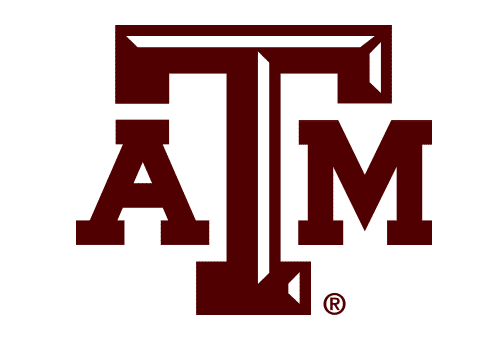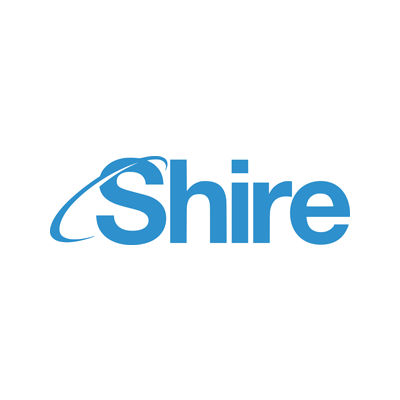预约演示
更新于:2025-05-07
Adult Lymphoblastic Lymphoma
淋巴母细胞淋巴瘤
更新于:2025-05-07
基本信息
别名 Adult Lymphoblastic Lymphoma、Adult Precursor Lymphoblastic Lymphoma、Diffuse lymphoblastic lymphoma + [54] |
简介 A lymphoblastic lymphoma occurring in adults. |
关联
67
项与 淋巴母细胞淋巴瘤 相关的药物靶点 |
作用机制 CXCR4拮抗剂 |
在研机构 |
最高研发阶段批准上市 |
首次获批国家/地区 美国 |
首次获批日期2023-09-08 |
靶点 |
作用机制 CD123抑制剂 |
在研适应症 |
最高研发阶段批准上市 |
首次获批国家/地区 美国 |
首次获批日期2018-12-21 |
223
项与 淋巴母细胞淋巴瘤 相关的临床试验NCT06918431
A Phase 2 Study Evaluating the Safety and Efficacy of Asparaginase Erwinia Chrysanthemi- Recombinant-Rywn (Recombinant Erwinia Asparaginase) During Pediatric-Inspired Regimen in High-Risk Adults With Newly Diagnosed ALL or LBL
This phase II trial tests the safety, side effects, and effectiveness of asparaginase Erwinia chrysanthemi during induction chemotherapy followed by consolidation chemotherapy in treating high-risk adults with newly diagnosed acute lymphoblastic leukemia or lymphoblastic lymphoma. Asparaginase Erwinia chrysanthemi, a type of protein synthesis inhibitor, is a drug that is made up of the enzyme asparaginase, which comes from the bacterium Erwinia chrysanthemi, and is used with other drugs in people who cannot take asparaginase that comes from the bacterium E. coli. Asparaginase Erwinia chrysanthemi breaks down the amino acid asparagine and may stop the growth of cancer cells that need asparagine to grow. It may also kill cancer cells. Induction therapy, consisting of cytarabine, dexamethasone, vincristine, daunorubicin, methotrexate, and rituximab, is the first choice of treatment. Consolidation therapy, consisting of cyclophosphamide, cytarabine, vincristine, mercaptopurine, methotrexate and rituximab, is given after initial therapy to kill any remaining cancer cells. Vincristine is in a class of medications called vinca alkaloids. It works by stopping cancer cells from growing and dividing and may kill them. Methotrexate is in a class of medications called antimetabolites. It is also a type of antifolate. Methotrexate stops cells from using folic acid to make deoxyribonucleic acid (DNA) and may kill cancer cells. Rituximab is a monoclonal antibody. It binds to a protein called CD20, which is found on B cells (a type of white blood cell) and some types of cancer cells. This may help the immune system kill cancer cells. Cyclophosphamide is in a class of medications called alkylating agents. It works by damaging the cell's DNA and may kill cancer cells. It may also lower the body's immune response. Cytarabine and mercaptopurine stop cells from making DNA and may kill cancer cells. They are a type of antimetabolite. Daunorubicin blocks a certain enzyme needed for cell division and DNA repair and may kill cancer cells. It is a type of anthracycline antibiotic and a type of topoisomerase inhibitor. Dexamethasone is in a class of medications called corticosteroids. It is used to reduce inflammation and lower the body's immune response to help lessen the side effects of chemotherapy drugs. Giving asparaginase Erwinia chrysanthemi with induction chemotherapy followed by consolidation chemotherapy may be safe, tolerable, and/or effective in treating high-risk adults with newly diagnosed acute lymphoblastic leukemia or lymphoblastic lymphoma.
开始日期2025-09-26 |
申办/合作机构 |
NCT06561074
A Phase 2 Study to Evaluate Efficacy of Calaspargase Pegol-mknl and Decitabine Combined With Venetoclax in Pediatric, Adolescent, and Young Adult Patients With Relapsed/Refractory T-cell Acute Lymphoblastic Leukemia (T-ALL) and T- Cell Lymphoblastic Lymphoma (T-LLy)
To learn if giving the study drugs calaspargase pegol-mknl and decitabine in combination with venetoclax can help to control relapsed/refractory T-ALL and T-LLy. The safety of this drug combination will also be studied.
开始日期2025-06-30 |
NCT03932903
Using Real Time Mobile Health Approaches to Understand and Promote Oral Chemotherapy Adherence in Adolescents and Young Adults With Leukemia
This is a small-scale micro-randomized clinical trial of a new mobile just-in-time adaptive intervention (JITAI) designed to promote oral chemotherapy adherence in adolescents and young adults (AYA) with acute lymphoblastic leukemia (ALL). The goals of this study are to determine intervention feasibility and acceptability.
开始日期2025-06-01 |
申办/合作机构 |
100 项与 淋巴母细胞淋巴瘤 相关的临床结果
登录后查看更多信息
100 项与 淋巴母细胞淋巴瘤 相关的转化医学
登录后查看更多信息
0 项与 淋巴母细胞淋巴瘤 相关的专利(医药)
登录后查看更多信息
2,255
项与 淋巴母细胞淋巴瘤 相关的文献(医药)2025-12-01·Journal of Hematopathology
CD3/CD20/CD45 negative leukemia cutis
Article
作者: Tsvetnov, Ilya ; Lyapichev, Kirill A ; Haiduk, Ihar
2025-07-01·Cancer Letters
Allogeneic versus autologous hematopoietic stem cell transplantation for adult T-lymphoblastic lymphoma: A real-world multicenter analysis in China
Article
作者: Zhu, Xiaoyu ; Gu, Zhenyang ; Lu, Jin ; Lu, Haiyang ; Hu, Xiaoxia ; Zhang, Chunli ; Chang, Yu ; Yang, Shenmiao ; Wang, Fengrong ; Mo, Xiaodong ; Wu, Xiaojin ; Huang, Xiaojun ; Jiang, Chuanhe ; Li, Chuan ; Wang, Yuewen ; Liu, Daihong ; Cao, Yang ; Liu, Xiaodan ; Zhang, Mingzhi ; Liu, Weiping ; Lu, Kang ; Wang, Luxiang
2025-06-01·Pediatric Blood & Cancer
A Retrospective Cohort Analysis of Children and Adolescents With Lymphoblastic Lymphoma in Latin America
Article
作者: Friedrich, Paola ; Luisi, Flavio ; Miller, Kenia ; Montoya, Jaqueline ; Muniz‐Talavera, Hilmarie ; Job, Godwin ; Gassant, Pascale ; Santana, Victor M. ; Jeha, Sima ; Chantada, Guillermo L. ; Gomez, Wendy ; Braz, Ana Rosa ; Peña, Armando ; Garrido, Claudia ; Cuturi, Bruno ; Metzger, Monika L. ; Sanchez, Mario Alberto Ornelas ; Devidas, Meenakshi ; Schelotto, Magdalena
98
项与 淋巴母细胞淋巴瘤 相关的新闻(医药)2025-04-23
EBMT 2025在2025年3月30日至4月2日于文艺复兴之都佛罗伦萨启幕的第51届欧洲血液与骨髓移植学会年会(EBMT 2025)上,东西方血液学专家在此共绘移植领域新图景。苏州大学附属第一医院黄海雯教授团队的多项研究聚焦T细胞淋巴瘤的移植策略,吸引了众多专家学者的目光。这些研究为临床医生提供了重要参考依据,推动了淋巴瘤治疗领域的进一步发展。《肿瘤瞭望-血液时讯》现场特邀黄海雯教授,为我们解读其中两项研究的内容和临床意义。《肿瘤瞭望-血液时讯》此次EBMT会议,您团队有多项研究入选,分别涵盖了T细胞淋巴瘤移植策略选择、NK/T细胞淋巴瘤在新型药物时代的治疗优化等,均为当前淋巴瘤领域的焦点问题。能否请您简要概括一下这些研究的核心设计与关键发现?黄海雯教授在本次EBMT会议上,我们团队共有5篇摘要入选,包含3篇纸质壁报(POSTER)和2篇e-poster 。我在此介绍两篇POSTER。第一篇摘要号为A042的研究中,我们针对T细胞淋巴母细胞淋巴瘤(T-LBL)患者的移植策略进行了分析,探讨自体造血干细胞移植(auto-HSCT)与异基因造血干细胞移植(allo-HSCT)的适用情况。研究数据显示,若患者在移植前能够达到完全缓解状态,那么与auto-HSCT相比,allo-HSCT的优势并不显著。因此,对于T-LBL患者而言,关键在于移植前能否获得完全缓解。对于移植前获得完全缓解的T-LBL患者,自体移植即可满足治疗需求。摘要号:A042英文标题:Autologous vs. Allogeneic Hematopoietic Stem Cell Transplantation for T-Cell Lymphoblastic Lymphoma: Allogeneic Transplantation—A Preferential Selection, But No Significant Advantages中文标题:自体与异基因造血干细胞移植治疗T细胞淋巴母细胞淋巴瘤对比结果:优先选择异基因造血干细胞移植,但并无显著优势背景:T细胞淋巴母细胞淋巴瘤(T-LBL)的预后极差,疗效持续时间短,3~5年的无病生存率(DFS)仅为30%~60%,患者的生存情况不容乐观。T-LBL复发后会导致不良结局,发生率约为15%-30%,这严重影响了患者的生活质量和生存时间。鉴于此,本研究通过单中心回顾性分析,旨在探索接受自体造血干细胞移植(auto-HSCT)或异基因造血干细胞移植(allo-HSCT)的T-LBL患者的临床结局,以及影响移植患者预后的相关因素。方法:本研究纳入2011年8月至2022年6月期间苏州大学附属第一医院血液科的81例T-LBL患者,其中22例(27.16%)接受auto-HSCT,59例(72.84%)接受allo-HSCT。通过回顾性收集81例T-LBL患者的人口统计学和临床数据,以比较两种移植方式的临床结局。结果:中位随访时间为41.4(2.3-160.4)个月,auto-HSCT组和allo-HSCT组的3年总生存率(OS)分别为78.6%和77.2%(P=0.885),3年无进展生存率(PFS)分别为59.2%和72.9%(P=0.226),3年累积复发率(CIR)分别为42.2%和26.1%(P=0.217),3年非复发死亡率(NRM)分别为0%和9.1%(P=0.153)。所有差异均未达到统计学显著性。亚组分析显示,在化疗耐药患者中,allo-HSCT组OS更高(61.54% vs. 0%,P=0.037)。对于有骨髓受累(73.33% vs. 16.67%,P=0.026)、化疗耐药(61.54% vs. 0%,P=0.029)以及接受全身照射(TBI)治疗(50% vs. 100%,P=0.045)的患者,allo-HSCT组PFS更高。单因素分析表明,影响所有患者OS的独立危险因素是移植前未达到完全缓解(CR)(风险比[HR]=7.02,95%置信区间[CI]:2.38-20.73,P<0.001)。影响PFS的独立危险因素是移植前乳酸脱氢酶(LDH)升高(HR=2.82,95%CI:1.17-6.81,P=0.021)和移植前未达到完全缓解(HR=3.51,95%CI:1.31-9.43,P=0.013)。影响CIR的独立危险因素是Ann Arbor分期为III-IV期(HR=9.78,95%CI:1.89-50.53,P=0.007)以及移植前未达到完全缓解(HR=7.02,95%CI:2.38-20.73,P<0.001)。结论:本研究是关于auto-HSCT和allo-HSCT治疗T-LBL疗效的真实世界数据。Auto-HSCT和allo-HSCT均是提高长期生存率的有效方法。与auto-HSCT相比,allo-HSCT治疗骨髓受累的T-LBL的PFS显著更高,治疗复发或难治性T-LBL的OS和PFS显著更高、CIR显著更低、NRM显著更高,但差异无统计学显著性。移植前未能达到完全缓解状态是影响所有移植患者OS、PFS和CIR的独立危险因素。上下滑动查看更多黄海雯教授第二篇摘要号为B353的研究中,我们对100余例NK/T细胞淋巴瘤患者的临床数据进行分析,这些数据均为2011年之后的真实世界数据。研究结果显示,对于骨髓受累且体能状态较差的患者,其预后相对较差。在治疗方面,以门冬酰胺酶为基础的一线治疗方案中,联合应用PD-1抑制剂或HDAC抑制剂(如西达本胺等药物),能够进一步提升一线治疗的疗效。鉴于骨髓受累患者的预后不佳,我们建议此类患者在后续治疗中采用自体移植进行巩固治疗,可进一步改善其生存率和预后。摘要号:B353英文标题:Clinical Characteristics and Treatment Outcomes of 104 Cases of Extranodal NK/T-Cell Lymphoma Undergoing Primary Treatment in the Novel Agents Era中文标题:新型药物时代下104例原发性治疗的结外NK/T细胞淋巴瘤的临床特征与治疗结局背景:结外NK/T细胞淋巴瘤(ENKTL)是一种罕见的侵袭性淋巴瘤。本研究旨在描述104例ENKTL患者的临床特征,评估以门冬酰胺酶为基础的化疗(联合或不联合新型药物)的疗效,并比较这些患者中自体造血干细胞移植(auto-HSCT)和异基因造血干细胞移植(allo-HSCT)的治疗结局。方法:分类变量的比较采用Pearson χ²检验或Fisher精确检验进行组间差异比较;连续变量的比较采用t检验或Mann-Whitney U检验。生存分析采用 Kaplan-Meier法进行,组间差异通过对数秩检验进行比较。多变量回归分析采用Cox比例风险模型进行。结果:本研究队列包括104例ENKTL患者,中位年龄为50岁(36-60岁)。18例患者(17.3%)为原发结外鼻型NK/T细胞淋巴瘤,其中8例以皮肤结节或溃疡为初始临床表现,5例以腹痛或肠穿孔为初始表现。根据PINK评分,将患者分为低危组(48例)、中危组(33例)和高危组(23例)。晚期患者的EB病毒DNA(EBV-DNA)阳性率高于局限性疾病患者(67% vs. 18%,P<0.001)。原发结外鼻型NK/T细胞淋巴瘤患者的Ki-67中位表达水平高于鼻型NK/T细胞淋巴瘤患者(83% vs. 70%,P<0.001)。与以门冬酰胺酶为基础的化疗方案(n=45)相比,以门冬酰胺酶为基础的化疗联合新型药物(n=48)在客观缓解率(ORR,96% vs. 80%,P=0.0496)和完全缓解率(CRR,91% vs. 73%,P=0.0483)显著更优。中位随访时间为759天,所有患者的2年总生存率(OS)和无进展生存率(PFS)分别为83%和69%,局限性疾病患者的2年OS和PFS分别为92%和77%,晚期患者的2年OS和PFS分别为65%和54%。晚期患者的EBV-DNA阳性比例高于局限性患者,多变量分析显示,EBV-DNA是影响生存的独立预后因素。骨髓受累和治疗前美国东部肿瘤协作组体能状态评分(ECOG)≥2是影响OS和PFS的独立危险因素。此外,联合使用新药是影响OS和PFS的独立有利预后因素。在接受造血干细胞移植(HSCT)的56例患者中,allo-HSCT组(n=22)的非复发死亡率更高,且更易出现晚期疾病和骨髓受累。Auto-HSCT组(n=34)的3年累积复发率更高,而对于移植前达到完全缓解(CR)的患者,allo-HSCT组的OS更高。对于化疗后达到CR的晚期ENKTL患者,allo-HSCT和allo-HSCT均能有效提高OS和PFS。有骨髓受累的年轻患者可能从allo-HSCT中获益,而无骨髓受累的老年患者可能更适合选择allo-HSCT。结论:晚期患者的EBV-DNA阳性率和增殖指数更高。以门冬酰胺酶为基础的化疗方案显著改善了患者的生存,联合新型药物可改善疗效。移植前对淋巴瘤的控制对于移植结局至关重要,CR状态是独立的预后因素。对于达到CR的晚期ENKTL患者,allo-HSCT和auto-HSCT均可行,具体选择需根据患者的个体因素和疾病特征来决定。上下滑动查看更多《肿瘤瞭望-血液时讯》这些研究无疑为淋巴瘤治疗领域带来了新的思考与启示。在您看来,这些研究成果在临床实践中具有怎样的重要意义?您参加此次EBMT会议比较关注哪些领域的进展?黄海雯教授T细胞淋巴瘤在中国的发病率相对较高,尤其是外周T细胞淋巴瘤和NK/T细胞淋巴瘤。因此,我们所收集和分析的数据能够为临床医生提供宝贵的参考。而T细胞淋巴瘤在欧美国家的发病率相对较低,相关研究也相对较少,这也是我们的研究能够被选为壁报展示的原因之一。我们的研究数据不仅对真实世界的研究具有重要意义,也为前瞻性研究提供了重要的参考,对临床医生具有一定的参考和指导价值。此外,作为一名专注于淋巴瘤亚专科的医生,我此次参会的重点聚焦于淋巴瘤领域的移植相关内容。细胞治疗作为移植领域的重要分支,其在淋巴瘤治疗中的进展同样引起了我的关注。黄海雯 教授苏州大学附属第一医院医学博士,主任医师,教授,博士生导师,淋巴瘤病区负责人苏州大学附属第一医院 中华医学会血液学分会 淋巴细胞疾病学组委员中华医学会肿瘤学分会 淋巴血液学组 委员国家癌症中心 淋巴瘤质控专家委员会 委员教育部博、硕士学位论文评审专家中国医药教育协会 淋巴瘤专业委员会 副主任委员中国抗癌协会中西整合淋巴瘤委员会 常务委员江苏省医学会血液学分会淋巴瘤学组,副组长江苏省抗癌协会淋巴瘤专业委员会、常委2005 - 2006 香港大学医学院,研究助理2006 - 2007法国蒙贝利埃大学医院,住院医师、获法国血液学专科医师资格 2009 -2010 法国蒙贝利埃大学医院,高级访问学者2013.8-2013.10美国加州大学洛杉矶分校,访问学者2023年人民好医生(淋巴瘤领域)杰出贡献奖,江苏省“六大高峰人才”主持、参与多项国家、省自然基金项目,发表SCI论文20余篇,是《中华血液学杂志》、《Annal of Hematology》、《Hematology Oncology》杂志审稿专家(来源:《肿瘤瞭望–血液时讯》编辑部)声 明凡署名原创的文章版权属《肿瘤瞭望》所有,欢迎分享、转载。本文仅供医疗卫生专业人士了解最新医药资讯参考使用,不代表本平台观点。该等信息不能以任何方式取代专业的医疗指导,也不应被视为诊疗建议,如果该信息被用于资讯以外的目的,本站及作者不承担相关责任。
临床结果细胞疗法
2025-04-21
点击蓝字关注我们近日,由国际顶尖专家美国国立卫生研究院(NIH)Nirali N. Shah教授发起、北京高博医院潘静主任团队等全球数十家医疗中心共同参与的EVOLVE研究项目在Blood杂志重磅发布突破性成果,首次系统性解析了急性淋巴细胞白血病患者在接受抗原靶向免疫治疗后发生谱系转换(Lineage Switch, LS)这一罕见现象的临床特征与分子机制。作为EVOLVE项目中唯一的中国参研单位,高博团队凭借在病例积累及CAR-T细胞治疗领域的突出优势,为该研究贡献了全球罕见的CD7 CAR-T治疗后谱系转换病例。为此,《肿瘤瞭望-血液时讯》特邀潘静教授,围绕EVOLVE项目的核心发现、中国团队的独特贡献及本土临床实践的转化应用等关键问题展开深度剖析,解析谱系转换的监测要点与治疗策略革新。《肿瘤瞭望-血液时讯》贵中心作为EVOLVE项目中唯一的中国参研单位,在与国际团队的合作中提供了哪些独特资源?该研究在谱系转换的认知上有何重要突破?潘静教授EVOLVE项目是由Nirali N. Shah教授发起的一项全球多中心回顾性队列研究,旨在系统性探索急性淋巴细胞白血病(ALL)患者接受免疫治疗后发生谱系转换这一罕见现象的临床特征及机制。既往文献中,该现象多以个案报道的形式呈现,缺乏大规模队列数据支撑,导致对其认知存在显著局限性。为突破这一局限,研究团队联合全球医疗中心构建了国际协作网络,通过严格筛选病例的免疫表型、临床特征及预后情况等数据,最终从90余例初筛病例中纳入了72例病例。本中心作为国内唯一参与该项目的中国单位,入选是基于两方面优势:其一本中心与Shah教授团队建立了长期合作关系,具备国际认可的临床研究资质;其二,本中心具备在全球范围内规模较大的T淋巴母细胞白血病/淋巴瘤(T-ALL/LBL)病例库,且在CAR-T细胞治疗研究领域成果颇丰。在该研究中贡献了2例CD7 CAR-T治疗后的谱系转换病例,此类病例在全球范围极为稀缺,为全面解析谱系转换这一罕见现象提供了重要支持。谱系转换在T系恶性肿瘤中的低发现率与其治疗模式演变密切相关。尽管自2019年以来,细胞免疫治疗在全球快速发展,但CAR-T治疗多以B系恶性肿瘤为主流,T系恶性肿瘤的免疫靶向治疗领域仍面临众多挑战。本研究通过对多中心数据的整合分析发现,接受靶向免疫治疗的T-ALL/LBL患者,同样可能发生谱系转换,突破了既往认为谱系转换主要见于B系的认知局限,为血液肿瘤学研究提供了新视角。此外,还进一步揭示了无论T系或B系ALL,伴有免疫表型异常或携带TP53等高危基因突变的患者更易发生谱系转换,采取联合治疗方案而非单一治疗可能有助于改善临床预后。《肿瘤瞭望-血液时讯》相较于2023年ASH上的初步报告,本次发表在Blood的最新研究成果取得了哪些更新和重要发现?这些新发现将如何指导优化我国LS诊疗路径?有哪些适合本土的领域诊疗调整建议?潘静教授本次更新的重要价值之一在于通过大规模病例入组,为解析ALL免疫治疗后谱系转换的临床特征提供了更充分的数据支持,尤其对中国临床实践具有多方面的指导意义。首先,研究验证了MLL基因重排患者对单纯免疫治疗获益的局限性。MLL重排在婴儿白血病中尤为常见,其谱系转换发生率显著增高。针对此类高风险人群,需采用CAR-T联合造血干细胞移植(HSCT),或双特异性T细胞衔接器(BiTE)联合移植的综合治疗策略以改善预后。这一发现提示我国临床工作者需重新评估MLL重排患者的治疗策略,重视综合治疗策略。其次,本研究强调动态监测免疫表型的重要性。患者确诊时若检测到免疫表型髓系标志(如CD33),需警惕后续谱系转换可能,这要求临床医生在治疗过程中建立动态监测体系,除常规微小残留病(MRD)检测外,还需特别关注克隆演变及谱系漂移现象。在分子遗传学层面,研究再次明确了TP53突变等高危基因的不良预后,此类患者单纯免疫治疗难以获益,同样需重视综合治疗策略。值得注意的是,本研究还观察到,TCF3::ZNF384融合基因或ZNF384重排与谱系转换的相关性,但受限于样本量较小,其临床意义尚需进一步验证。此外,鉴于CAR-T在T系治疗领域的发展滞后于B系,随着CD7 CAR-T等细胞治疗的逐步推广与应用,临床需逐步建立个体化、精细化的诊疗体系。特别是需要重点关注高危遗传学异常等不同亚组群体的早期干预策略,同时动态追踪长期疗效、远期并发症及谱系转换风险,为完善治疗体系提供更多证据支持。《肿瘤瞭望-血液时讯》该研究显示,34例(48.6%)LS患者的最后一次免疫治疗为CAR-T细胞治疗,凸显了其在复发/难治病例中的重要地位。然而,CAR-T细胞治疗后,LS的中位发生时间为2.8个月,且至少6例在CAR-T细胞治疗后1个月内或同期出现LS。这一结果对现有CAR-T临床治疗策略提出了怎样的启示?结合高博医疗集团在细胞免疫治疗领域的创新与实践,贵团队在突破这一治疗困境方面有哪些前瞻性探索方向或临床建议?潘静教授根据临床观察与研究数据可发现,对于具有谱系转换倾向的患者,单一靶向CAR-T治疗的缓解持续时间显著受限,这与靶抗原丢失现象密切相关,例如CD19 CAR-T、CD22 CAR-T治疗后出现相应的抗原丢失,且每次抗原丢失周期呈现进行性缩短趋势。此外,等待抗原丢失、肿瘤复发后再行处理的延迟干预策略与不良预后相关。基于上述发现,本中心已建立动态监测的新模式:针对高危易复发人群,无论是否具有谱系转换倾向,CAR-T治疗后均常规开展动态基因突变比例监测。以TP53体细胞突变为例,部分患者即使流式细胞术检测MRD已不可测量到残留白血病细胞,但仍可检出低频的TP53突变残留。结合现有研究证据,此类情况必然会导致后续靶点丢失或谱系转换等事件的发生。因此,本中心创新性实施早期联合免疫治疗策略。例如,CAR-T治疗后第15天检测显示TP53突变频率仍约10%,则启动CD22 CAR-T治疗,直至突变频率降为0%,随后持续随访,而非等待临床复发。一旦患者突变频率升高,即使骨髓形态学未见异常,其复发风险仍显著增高。综上所述,高博医疗集团的临床实践与EVOLVE项目的核心观点高度契合,均一致认为针对谱系转换高风险病例,联合治疗策略相较于单一治疗更具优势。未来,我中心潜在的国际合作方向将聚焦于两大维度:其一为基于复杂病例的临床数据共享与分析协作,其二为推进全球多中心临床研究,特别是运用新型CAR-T载体技术治疗T系血液肿瘤的相关研究。我们将持续发挥高博医疗集团的专业优势,在新型免疫疗法的开发、治疗机制的深入探索以及动态监测模型的建立等方面,与国内外顶尖医疗中心开展全方位、多维度的合作,携手共进,共同推动血液肿瘤精准医疗体系的不断迭代与升级。潘静教授与Nirali N. Shah教授(ASH 2023现场)潘静 教授北京高博医院血液肿瘤免疫治疗科主任副主任医师;医学/基础免疫学博士学术任职:中国药科大学硕士研究生导师中国抗癌协会小儿肿瘤专业委员会专业委员中国抗癌协会血液肿瘤专业委员会青年委员中国医药生物技术协会医药生物技术临床应用专业委员会青年委员广东省临床医学学会小儿血液肿瘤专业委员会细胞免疫治疗学组顾问北京市医药卫生科技创新成果转化专家库专家中国抗癌协会血液肿瘤专业委员会青年委员中国医药生物技术协会医药生物技术临床应用专业委员会青年委员专业经历和特长简介:擅长白血病CAR-T细胞免疫治疗及转化研究。2017年率先提出B- ALL的CAR-T的分层治疗,优化CAR-T治疗过程中的并发症处理,建立CAR-T治疗后的疗效监控体系,进行相关探索性研究。相关的CD19CAR-T临床研究、CD22CAR-T临床研究、CD19-22序贯CAR-T研究等,较早发表在国际血液病权威杂志期刊Lancet Oncology、blood和Leukemia。 2019年率先在全球提出供者CD7 CAR-T治疗难治复发T-ALL/LBL患者的临床策略。同时进行治疗相关机制研究,优化难治复发T-ALL/LBL患者CAR-T治疗策略。2024年相关供者CD7 CAR-T细胞治疗难治复发T-ALL/LBL患者的长期数据;自体CD7 CAR-T、供者CD5 CAR-T治疗相关数据均在国际血液病权威杂志期刊Nature Medicine,JCO和JHO上。并多次在国内外学术会议(美国临床肿瘤大会ASCO、美国血液年会ASH、欧洲血液年会EHA、日本血液年会JSH)汇报团队免疫治疗的最新进展。其中,CD22CAR-T临床研究、CD19-22序贯CAR-T研究、CD7CAR-T临床研究的短期和长期随访数据的4篇文章被《ESI》高被引论文收录。(来源:《肿瘤瞭望–血液时讯》编辑部)声 明凡署名原创的文章版权属《肿瘤瞭望》所有,欢迎分享、转载。本文仅供医疗卫生专业人士了解最新医药资讯参考使用,不代表本平台观点。该等信息不能以任何方式取代专业的医疗指导,也不应被视为诊疗建议,如果该信息被用于资讯以外的目的,本站及作者不承担相关责任。
免疫疗法细胞疗法
2025-03-30
EBMT 20252025年3月30日至4月2日,第51届欧洲血液与骨髓移植学会年会(EBMT 2025)在意大利佛罗伦萨隆重召开。作为血液学领域极具影响力的国际盛会,本届大会吸引了全球五千余名专家学者参与,共同探讨造血干细胞移植与细胞治疗的前沿进展。在本届大会上,陆道培医院刘德琰教授的一项聚焦T淋巴母细胞淋巴瘤(T-LBL)和T细胞急性淋巴细胞白血病(T-ALL)的创新性研究(摘要号:P217)成功入选大会摘要。该研究通过结合脂质体米托蒽醌(Lipo-MIT)与全身放疗(TBI)的预处理方案,在异基因造血干细胞移植(Allo-HSCT)中展现出显著疗效。本刊特邀刘德琰教授与广大同道分享该项研究成果及其临床意义。摘要号:P217英文标题:Safety and Efficacy of Liposomal Mito-xantrone (Lipo-MIT) Combined with TBI-Based Conditioning for Allo-HSCT in Relapsed/Refractory T-LBL and T-ALL中文标题:脂质体米托蒽醌(Lipo-MIT)联合基于全身放疗(TBI)的预处理方案用于异基因造血干细胞移植(Allo-HSCT)治疗复发/难治性T淋巴母细胞白血病(T-LBL)和T细胞急性淋巴细胞白血病(T-ALL)患者的安全性和有效性研究背景T-LBL/T-ALL在世界卫生组织(WHO)分类中同属前体T细胞肿瘤,具有高度侵袭性、高复发率的特点,容易伴发中枢神经系统、纵膈、肝脾、睾丸等髓外组织和器官的浸润。对于分期晚、治疗反应差的T-LBL和难治复发的高危T-ALL,allo-HSCT仍然是目前唯一有可能达到治愈的手段。Allo-HSCT前加强预处理方案,可增大对残留白血病细胞的清除程度,维持更持久的完全缓解期,以待移植后供者移植物抗白血病(GVL)效应的发挥,从而降低移植后T-LBL和T-ALL的复发率。Lipo-MIT是由脂质体技术制成的米托蒽醌的新配方药物,具有优异的生物药理学特性和组织渗透性,可以显著提高米托蒽醌的抗肿瘤作用并减少其副作用。我们使用Lipo-MIT联合基于TBI的加强预处理方案对T-LBL和T-ALL患者进行Allo-HSCT,并评估其有效性。研究方法回顾性分析2022年8月16日至2024年11月5日在河北燕达陆道培医院和北京陆道培医院接受Allo-HSCT,并联合使用Lipo-MIT + TBI/CY(环磷酰胺)或TBI/FLU(氟达拉滨)预处理方案的35例T-LBL或T-ALL患者。其中,男性患者23例,女性患者12例,中位年龄25岁(7~41岁)。T-LBL 19例(Ⅳ期18例,Ⅲ期1例),T-ALL 16例。移植前疾病状态为CR1 9例,CR2 20例,CR3 1例,PR/NR 5例。20例患者接受了CD7-CAR T桥接移植。33例为单倍型移植,2例为同胞全相合移植。7例为二次移植。预处理方案组成:Lipo-MIT 20 mg/m2/d,-11d;Ara-C 3g/m2/d,-11〜-9d;TBI 2Gy,bid,-8〜-6d(总剂量10-12Gy);CY 1.2~1.8g/m2/d,-5-4d或FLU 30mg/m2/d,-5-2d;MeCCNU250 mg/ m2/d,-3天。ATG-F和CSA/MMF/sMTX用于aGVHD预防。研究结果除2例植入前因感染死亡外,其余32例均成功植入。移植后+28天进行骨髓评估,1例患者为混合嵌合状态,31例患者为100%完全供者型。中位随访时间为移植后197天(3~575天),1年总生存率(1y-OS)和无病生存率(1y-DFS)均为80.97%(图1A)。移植后100天II-IV度和III-IV度急性移植物抗宿主病(aGVHD)的累积发病率分别为28.5%和14.3%(图1B),局限型慢性移植物抗宿主病(cGVHD)的累积发病率为34.3%,累积复发率(CIR)为4.3%(图1C)。CR1,≥CR2和PR/NR组1y-DFS分别为88.9%±10.5%,85.3±10.1%和40%±21.9%(P=0.021)。CD7 CAR-T桥接移植组和非CAR-T组1y-DFS分别为64.4%±13.6%和93.8%±6.1%(P=0.133)。Lipo-MIT+TBI/CY和Lipo-MIT+TBI/FLU组之间1y-DFS率无显著差异(82%±2.2% vs. 74%±11.4%,P=0.379)。移植后死亡6例,死亡原因均为感染(2例病毒,3例细菌和1例镰刀菌)。图1. 35例T-LBL或T-ALL患者的OS、DFS、CIR及aGVHD的累积发病率研究结论Lipo-MIT联合TBI为基础的预处理方案可有效提高难治/复发高危性T-LBL和T-ALL患者的无病生存率。刘德琰 教授陆道培医院造血干细胞移植科主任中国生物医学工程学会干细胞工程技术分会移植及血浆置换学组委员中国抗癌协会血液病转化医学专业委员会会员廊坊市抗癌协会及第一届药物临床实验安全性评价专业委员会委员从事血液科及造血干细胞移植工作17年余,共计完成800余例造血干细胞移植手术,中位年龄15岁,最小年龄1岁的噬血细胞综合征。擅长应用异基因造血干细胞移植治疗各类恶性血液病:如急性髓系白血病、急性淋巴细胞白血病、骨髓增生异常综合征,难治复发淋巴瘤等。对非恶性血液疾病如急性再生障碍性贫血先天性纯红细胞再生障碍性贫血,阵发性睡眠性血红蛋白尿先天性免疫缺陷症等积累了丰富经验。较早开展了异基因造血干细胞移植治疗多种罕见病的工作,包括家族性血细胞综合征、朗格汉斯细胞增多症、X连锁慢性肉芽肿,先天性角化不良合并再障等。重点研究方向:难治复发白血病和淋巴瘤的加强预处理造血干细胞移植术,移植后重度移植物抗宿主病(GVHD)的预防和救治。(来源:《肿瘤瞭望–血液时讯》编辑部)声 明凡署名原创的文章版权属《肿瘤瞭望》所有,欢迎分享、转载。本文仅供医疗卫生专业人士了解最新医药资讯参考使用,不代表本平台观点。该等信息不能以任何方式取代专业的医疗指导,也不应被视为诊疗建议,如果该信息被用于资讯以外的目的,本站及作者不承担相关责任。
临床3期临床1期细胞疗法临床终止孤儿药
分析
对领域进行一次全面的分析。
登录
或

生物医药百科问答
全新生物医药AI Agent 覆盖科研全链路,让突破性发现快人一步
立即开始免费试用!
智慧芽新药情报库是智慧芽专为生命科学人士构建的基于AI的创新药情报平台,助您全方位提升您的研发与决策效率。
立即开始数据试用!
智慧芽新药库数据也通过智慧芽数据服务平台,以API或者数据包形式对外开放,助您更加充分利用智慧芽新药情报信息。
生物序列数据库
生物药研发创新
免费使用
化学结构数据库
小分子化药研发创新
免费使用







